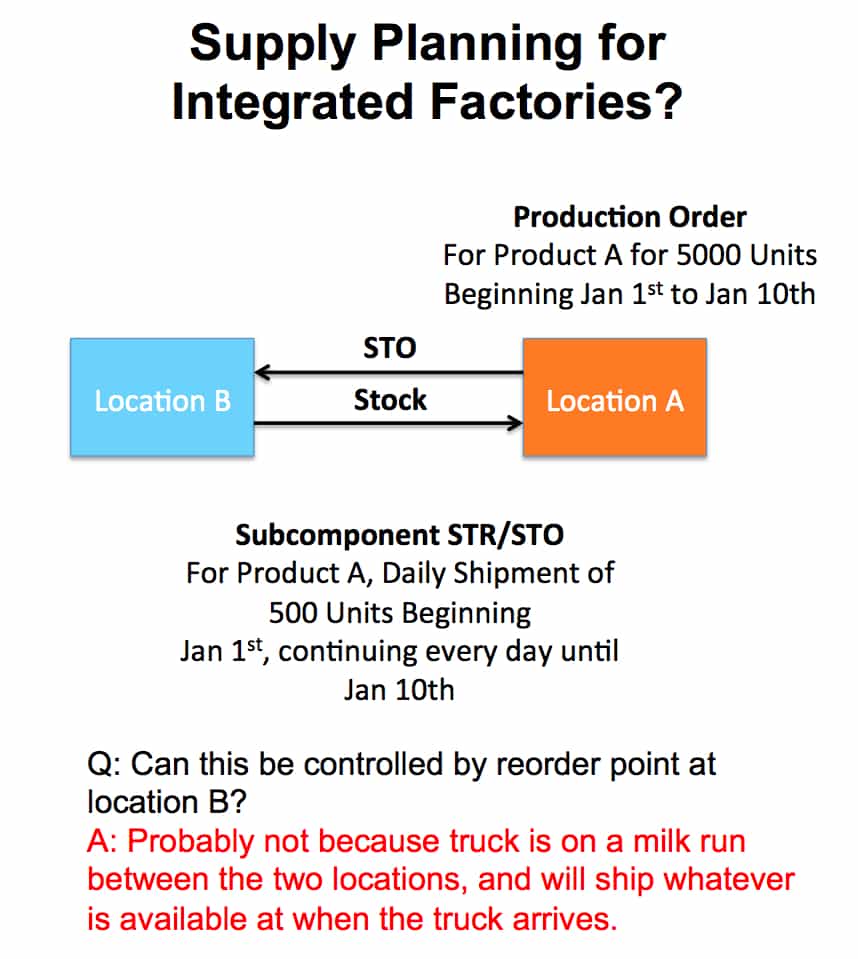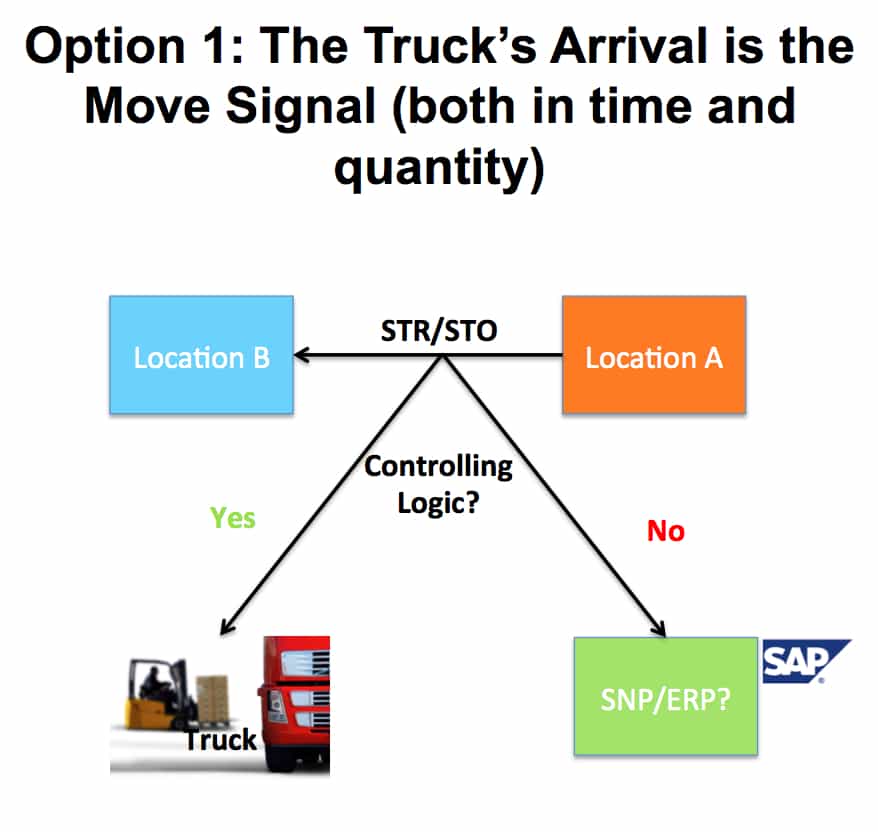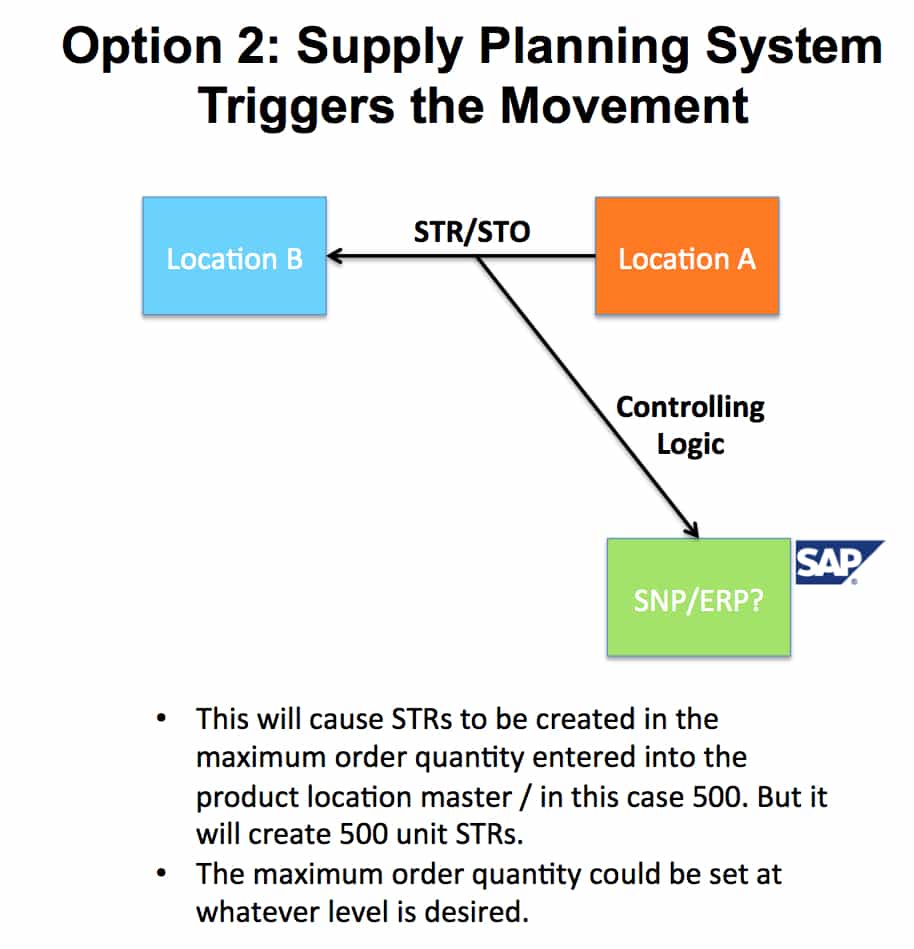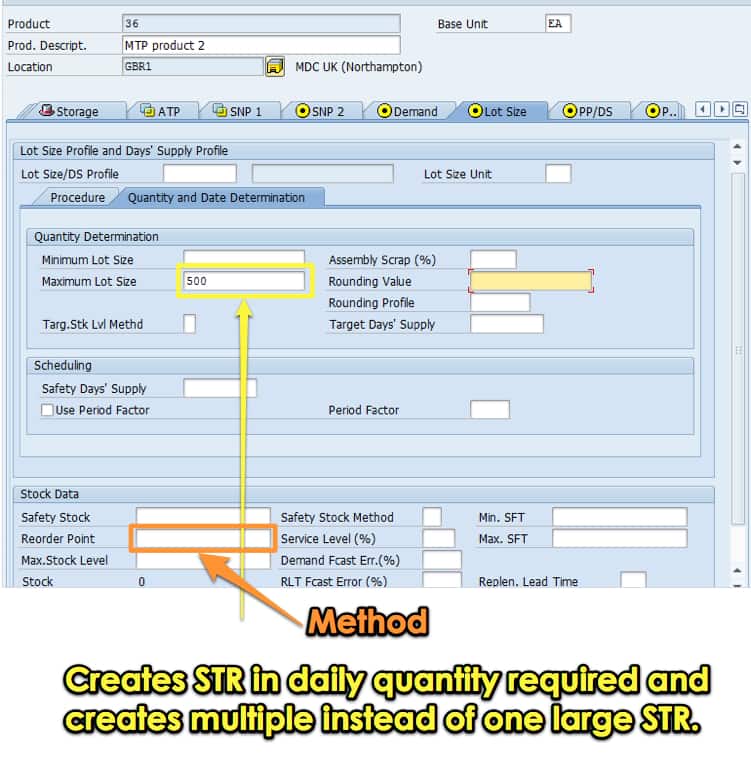How to Understand Synchronized Integrated Factories with Stock Transfers
Executive Summary
- The background of continuous flow management between facilities.
- The implications for supply and production planning for continuous flow.
- Deciding upon what should set the control signal for movements between integrated factories in a continuous flow environment (the truck’s schedule or the supply planning system).
Continuous Flow Manufacturing and Integrated Factories
The flow of orders between facilities is designed in supply planning systems to model hard starts and stops that are part of a sequential flow where one process is finished before another one starts. For instance, the following steps are often followed in this sequence:
- A production order is often initiated in a plant, which produces finished goods based upon a sales order.
- The plant then places a request on a subcomponent plant (let us say the subcomponent plant is internal to the same company).
- The supply planning system then plans the subcomponent plant to produce the then entire quantity of the requirement, which is then shipped in a complete fashion consistent with the transportation, goods issue, and goods receipt lead times set up in the system.
- The finished goods facility then beings processing through all of the subcomponents in the factory in the full production need quantities until it has completed the number of units that make up the finished goods production orders.
However, this standard model is not how all factories or locations that are essentially integrated or superplant actually work. Instead of waiting until all of the subcomponents are produced at the subcomponent factory to ship them, some companies ship incrementally to finished goods or even component factories (intermediaries between sub-component and finished goods factories) as production continues. This creates a “continuous flow” between the factories. The individual shipments are incremental shipments that are connected to the requirements for a single production order. This is explained by the graphic below:

Planned by the Truck’s Arrival or by an Incremental Stock Transport Order?
There is a need for a continuous flow between finished goods manufacturing facilities and sub-component manufacturing facilities. There are several ways to account for this in the system, and how it is accounted for depends on how the company wants to manage the movement of materials between the locations. There are two basic options:
- Allow the truck’s arrival to control the movement timing and quantity between the systems.
- Allow the supply planning system to control the movement between the facilities.
These options are shown in the two graphics below:

Option 2 is shown below:

The decision is a simple one and depends on how the company wants to manage the plants’ flow of material. If the truck leaves with whatever is currently ready for shipment at the time, then the truck is actually producing the move signal. This is the design of many “milk runs” (so-called because, like a milkman of old, they drive the same route every day) in which a truck drives in a predefined route every day or every few days.
Often the desire is to maintain a consistent schedule, which means that the truck does not wait for a certain amount of production to be completed but rather picks up whatever is available. The advantage of this approach is that while the quantity the plants will receive is unknown, arrival time is essential. Under this design, the stock transport order is created just a few minutes before the goods issue, and an inventory count is performed at the source plant’s shipping dock. In this case, the planning system / APO is not involved in decision-making, and the ERP systems are used to record what occurred.
A second approach is to have the truck wait until production to the planned stock transport order is complete. In this case, the stock transport requisition is planned in APO / SNP and then converted to and stock transport order (STO). The shipping department is then responsible for meeting this quantity. To ship a quantity, which matches this STO with a continuously running production line, it can become necessary to postpone the truck’s departure. This means that while the quantity to be shipped and received is more or less guaranteed, the time the truck arrives at the receiving location is unknown and based upon manufacturing variances. It also means that the truck will have a lower capacity as its operational window (that is, the time it is actively loading, unloading, and transporting freight) has effectively been reduced.
Conclusion
Supply planning software is normally designed and managed as if they are not part of an integrated production line. Some finished goods are composed of multiple production lines distributed among various facilities as part of a superplant. Different locations within a superplant have their production lines integrated by shipping portions or increments of their sub-components to an intermediate plant or the finished goods assembly plant. This may occur daily and is sometimes enabled by a “milk run,” a repetitive and fixed route between facilities, integrating the facilities in a circuit. When this design is used, the company has two basic options for managing the flow of material.
- The first option is to allow the truck’s arrival and schedule to control the shipped quantity at each stop in the milk run. This has the advantage of allowing the truck to keep a consistent scheduled and means that receiving plants can generally count on a specific or published arrival time. The factory can then plan their production runs around this time (although they may have sufficient inventory to keep the line running without adjusting for the truck’s schedule). In this scenario, stock transport orders are created after the count is made at the shipping dock, and the count is variable depending upon what is available. In this case, there is no need to pass the stock transport requisition from the planning system to the ERP system. The stock transport requisitions can be visible in the planning system to the planners but are not sent to the ERP system. (This article shows the options for sending requisitions to the ERP system.) In this case, the ERP system records what has already happened in the factory. The production orders actually control the flows between locations, with the stock movements being controlled by an essentially automated the truck schedule. It is then the transportation department’s responsibility to set up the truck’s itinerary to meet all production facilities’ needs.
- The second option allows the supply planning system to initiate the stock transfer order by following the normal process flow of supply planning, with requisitions created in the planning system, which are then converted to stock transport orders either by their transfer to ERP the ERP system. However, to follow this approach, an adjustment is necessary to the maximum lot size of the subcomponent so that the production order does not drive the stock transport requisition to be larger than what is desired to be shipped in increments between the factories, and thus breaking the continuous flow of material required to support integrated manufacturing. The setting in SAP APO to control for this is shown below:

This setting forces the creation of stock transport requisitions in quantity determined in the maximum lot size field. Because the requirement (initiated by a planned production order) will land on a specific day, this may mean the system will create all stock transport requisitions on one day. However, the requisitions can be manually spaced out to the days desired.
For two factories that are part of what is, in essence, one production line, simply shipping what available makes a lot of sense. The truck schedule, rather than the system, becomes the pacesetter, which determines the control of material movement. This is with the caveat that the truck’s schedule is intelligently designed to synchronize the factories best. This illustrates the principle that for stock movements based upon integrated work centers, the resources’ natural capacities take control from the planning system in materials management.
The determination of which method would be used could logically be determined based upon plant proximity. If the plants are within a day or so drive between one another, option 1 could be used. When plants are further away from each other than this, having the supply planning system trigger the movements, or option 2 would make more sense.